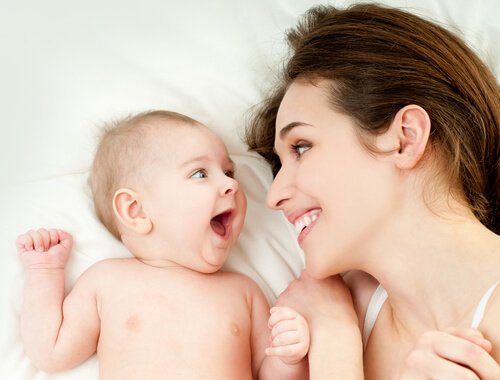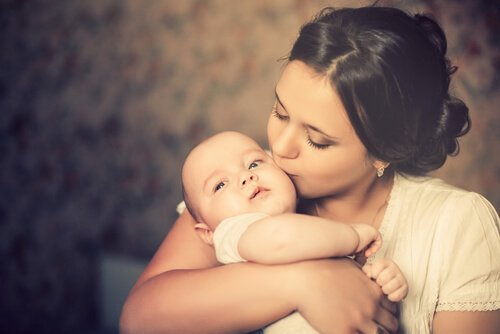The Stages of Attachment and Bonding

Attachment is a survival mechanism. Some authors even refer to this affectional bond as our “psychological immune system.”
Although many theories define and explain attachment, the most important and referential one is John Bowlby’s. According to this psychiatrist and psychoanalyst, children are biologically pre-programmed to form bonds with others in order to survive. For this reason, he believed that all of the behaviors related to the creation and maintenance of bonds are instinctive.
On the other hand, it’s important to keep in mind that the parent-child attachment won’t disappear as time goes on. Actually, it’ll influence us for the rest of our lives in every one of the relationships we build. This is why it’s important to develop an attachment based on trust and protection.
“I have no fear of losing you, for you aren’t an object of my property, or anyone else’s. I love you as you are, without attachment, without fears, without conditions, without egoism, trying not to absorb you. And I love you freely because I love your freedom, as well as mine.”
-Anthony de Mello-
Stages of attachment and bonding
Bowlby’s evolutionary model contemplates four attachment stages, which are particularly noticeable in mother and child relationships. However, attachment can establish between any primary caregiver and the child they care for.
Below, we’ll explain how the establishment of this affectional bond evolves from Bowlby’s perspective.

1. Pre-attachment phase
This first phase occurs during the first six weeks of a baby’s life, when they accept any being that offers them comfort. This means that babies don’t show preferences for anyone in particular.
At this stage, the baby’s repertoire of innate behaviors helps them attract the attention of protectors. In addition, the baby responds to external stimuli and seeks to provoke physical contact.
At this time, the baby’s maternal recognition is quite rudimentary and they still don’t show a strong attachment bond.
2. Attachment in making
From six weeks and up until they’re eight months old, the child begins to feel anxious if they’re separated from other human beings. Even so, they still don’t notice the maternal lack in particular nor entirely reject strangers.
During this phase, although it may cause them anger not to be close to adults, they don’t yet show a special preference for either of their parents.
3. Attachment and bonding phase
From six to eight months up until the age of two, the attachment phase manifests. Now the baby feels angry when they’re separated from their mother and may even be anxious about it.
During separation, it’s normal for the baby to physical reject other people because they pose a threat. In other words, all of their actions aim to attract their maternal figure, demanding her presence.

4. Reciprocal relationships
After the age of two, the fourth and final phase begins: the phase of reciprocal relationships. During this stage, the child understands that their mother’s absence isn’t permanent. Thus, they’re able to deal with their own anxiety and even calm themselves down.
Additionally, the child is now capable of developing mental images of their mother and understanding them. Thus, they can now predict that she’ll return because they now understand exits and returns and will cry less during her absence.
After a child overcomes all these stages, they can form solid relationships with their parents. At that point, physical contact is no longer as necessary. This is because the child knows that even if there is no physical contact, their caregiver will be there when they need them.
This text is provided for informational purposes only and does not replace consultation with a professional. If in doubt, consult your specialist.








